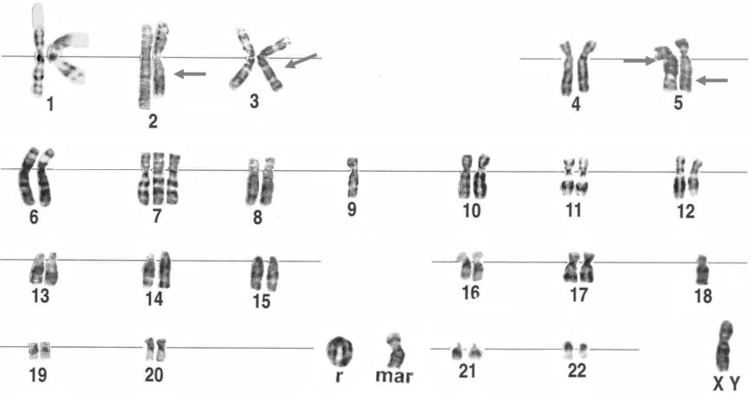 | ||
A ring chromosome is a chromosome whose arms have fused together to form a ring. Ring chromosomes were first discovered by Lilian Vaughan Morgan in 1926. A ring chromosome is denoted by the symbol r in human genetics or R in Drosophila genetics. Ring chromosomes may form in cells following genetic damage by mutagens like radiation, but they may also arise spontaneously during development.
Contents
Formation
In order for a chromosome to form a ring, both ends of the chromosome must usually be lost, enabling the arms to fuse together. However, ring formation can also occur with only one end being lost. In rare cases, the telomeres at the ends of a chromosome fuse without any disappearance of material.
Associated diseases
Human genetic disorders can be caused by spontaneous ring chromosome formation; although ring chromosomes are very rare, they have been found in nearly all human chromosomes. Disorders arising from the formation of a ring chromosome include ring chromosome 20 syndrome where a ring formed by one copy of chromosome 20 is associated with epilepsy; ring chromosome 14 and ring chromosome 13 syndrome are associated with intellectual disability and dysmorphic facial features; ring chromosome 15 is associated with intellectual disability, dwarfism and microcephaly. Ring formation of an X-chromosome causes Turner syndrome. Symptoms seen in patients carrying ring chromosomes are more likely to be caused by the deletion of genes in the telomeric regions of affected chromosomes, rather than by the formation of a ring structure itself.
Complex rearrangements, including segmental microdeletions and microduplications, have been seen in numerous ring chromosomes, providing important clues regarding the mechanisms of their formation.
